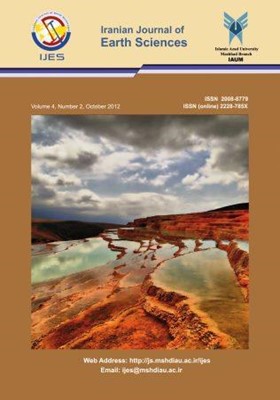Remote Sensing and Land Use Extraction for Kernel Functions Analysis by Support Vector Machines with ASTER Multispectral Imagery
Subject Areas : MineralogyE. Akbari 1 , N. Amiri 2 , H. Azizi 3
1 - Geography Department, Remote Sensing and GIS, Hakim Sabzevari University, Sabzevar, Iran.
2 - Dept. of Geomatics,University of Tabriz, Tabriz, Iran.
3 - Mining Department, Faculty of Eng. University of Kurdistan, Sanandaj, Iran.
Keywords:
Abstract :
Land use is being considered as an element in determining land change studies, environmental planning and natural resource applications. The Earth’s surface Study by remote sensing has many benefits such as, continuous acquisition of data, broad regional coverage, cost effective data, map accurate data, and large archives of historical data. To study land use / cover, remote sensing as an efficient technology, is always desired by experts. In this case, classification could be considered as one of the most important methods of extracting information from digital satellite images. Selecting the best classification method and applying the proper values for parameters extremely influence the trust level of extracted land use maps. This research is an applied study which attempts to introduce Support Vector Machines (SVM) classification method, a recent development from the machine learning community. Moreover, we prove its potential for structure–activity relationship analysis on Aster multispectral data of central county of Kabodar-Ahang region in Hamedan, Iran. Accuracy of SVMs method is varied by the type of kernel functions and its parameters. The purpose of this research is to find the accuracy of Land use extraction by SVM method by Polynomial and radial basis functions kernel with their estimated optimum parameters in addition to compare the results with Maximum Likelihood method. Most of the scientists imply that Maximum Likelihood method is suitable for classification. Therefore, we try to compare SVM with ML method and to deliberate the efficiency of this new method in classification progress on Aster multispectral data. The accuracy of SVM method by Polynomial and radial basis functions kernel with optimum parameters and ML classification methods achieved 93.18%, 91.77% and 88.35 % respectively as an overall accuracy. By comparing the accuracy of these methods, SVM method by Polynomial kernel was evaluated as suitable. Therefore, we can suggest using SVM method especially with the use of Polynomial kernel to determine land use. In general, the results of this research are very practical in natural resources conservation planning and studies. Also, this study verifies the effectiveness and robustness of SVMs in the classification of remotely sensed images.


